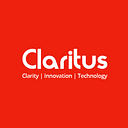What Is the Difference Between Digitization, Digitalization, and Digital Transformation
What is the difference between Digitisation, Digitalisation, and Digital Transformation? Many people confuse them with each other, but it’s not that hard to learn and understand the differences. Let us explain it in simple words and examples.
Digitalization, digitization, digital transformation: why does it matter?
Are you interested in digital transformation? If yes, then it’s good to know the real meanings of those terms and understand what we’re talking about.
Digitalization, digitization, and digital transformation are often used together. Sometimes even interchangeably, which is a mistake. This article will make things clearer and help you understand digital transformation processes.
What is digitization?
Digitization is the process of converting information from a physical format to a digital one. It means converting something non-digital into a digital representation to be used by computer systems and automate processes or workflows.
Digitization enables to the creation of business value, which needs data. It helps to lay the foundation for business use cases that leverage the data.
Examples:
- Scanning a paper document and saving it on the computer’s hard drive as a digital document, like PDF.
- Going from notes on paper to typing them up in an Excel spreadsheet.
- Converting from analog VHS cassettes to CD, DVD or Blu-Ray discs containing digital data.
What is digitalisation?
Digitization and digitalization are closely associated. They are often used interchangeably, but they are two different things.
Digitalization is the process of leveraging digitization to improve business processes. Digitalization means making digitized information work for you.
This term refers to the use of digital technologies and data to create revenue, improve business, and create a digital culture where digital information is at the core. It converts processes to be more efficient, productive, and profitable.
Examples:
- Uploading a PDF document from a computer’s hard drive to the cloud and sharing it with many people to analyze the data;
- Converting an Excel spreadsheet to a Google Sheet stored in the cloud. The platform provides a structured environment where the documents can be shared among several users. Still, a Google Sheet itself requires human interaction to keep it up to date.
- Uploading digital movies from CD, DVD or Blu-Ray discs to online services. People can download or rent them.
What is digital transformation?
Digital transformation is the transformation of business activities, processes, products, and models to fully leverage the opportunities of digital technologies. The main goal is to improve efficiency, manage risk or discover new monetization opportunities. Digital transformation is doing things in a new (digital) way.
Examples:
- Reading the data from an online PDF or moving the data from a Google Sheet into an app or system that will analyze the data. The goal is to provide us with insights to offer new products or improve customer service. This process doesn’t need a lot of human interaction because is automated. As a result, it enhances efficiency, reduces costs, and may lead to increased sales.
- Streaming movies online. Collecting data from clients to analyze it, preparing individual recommendations, offers, and advertisements.
The report “Digital Factories 2020: Shaping the future of manufacturing” published in 2017 by Pricewaterhouse Coopers describes many great examples of a digital transformation in real life. One of them is the Fujitsu company and its factory in Germany.
“Fujitsu has brought together the entire value chain on a single campus, from development through to interactions with the end customer, including service and training. At the heart of the factory is a sophisticated information technology (IT) driving production and logistics.
With its Augsburg showcase factory, Fujitsu is developing and producing computer hardware in Germany at competitive costs. On the campus of the “breathing factory”, that responds flexibly to the level of orders, the Japanese concern is using cloud-based services, digital applications, and rapid prototyping to develop a plant that showcases the digital factory as an integrated part of a comprehensive, customer-focused Industry 4.0 approach.
Extremely fast production to exact customer specifications is possible thanks to digital shop floor data management. “Smart factory” solutions increase transparency and quality, ensure that data is always current, and reduce costs.
These range from supporting the supermarket concept through the permanent optimization of the transportation and warehousing structures all the way to customer-specific digital labels. Modular software-based building blocks — the “connected applications” that makeup Fujitsu’s Manufacturing Execution System round out the digitized production process. These allow for precise/specific changes within an individual module and significantly faster reaction times”, says the report.
What is the difference between digitization and digital transformation?
Digitalization is about applying technology to the existing business. Digital transformation means doing things in a new, digital way. Digital transformation is a broader term than digitalization.
Digitization and digitalization are parts of a digital transformation. Digital transformation includes all aspects of business, like customer understanding & touchpoints, growth strategy, enterprise mobile applications, process digitization, worker enablement, performance, new business models, and more. It leads to an entirely new market, as well as a new customer and business realities.
